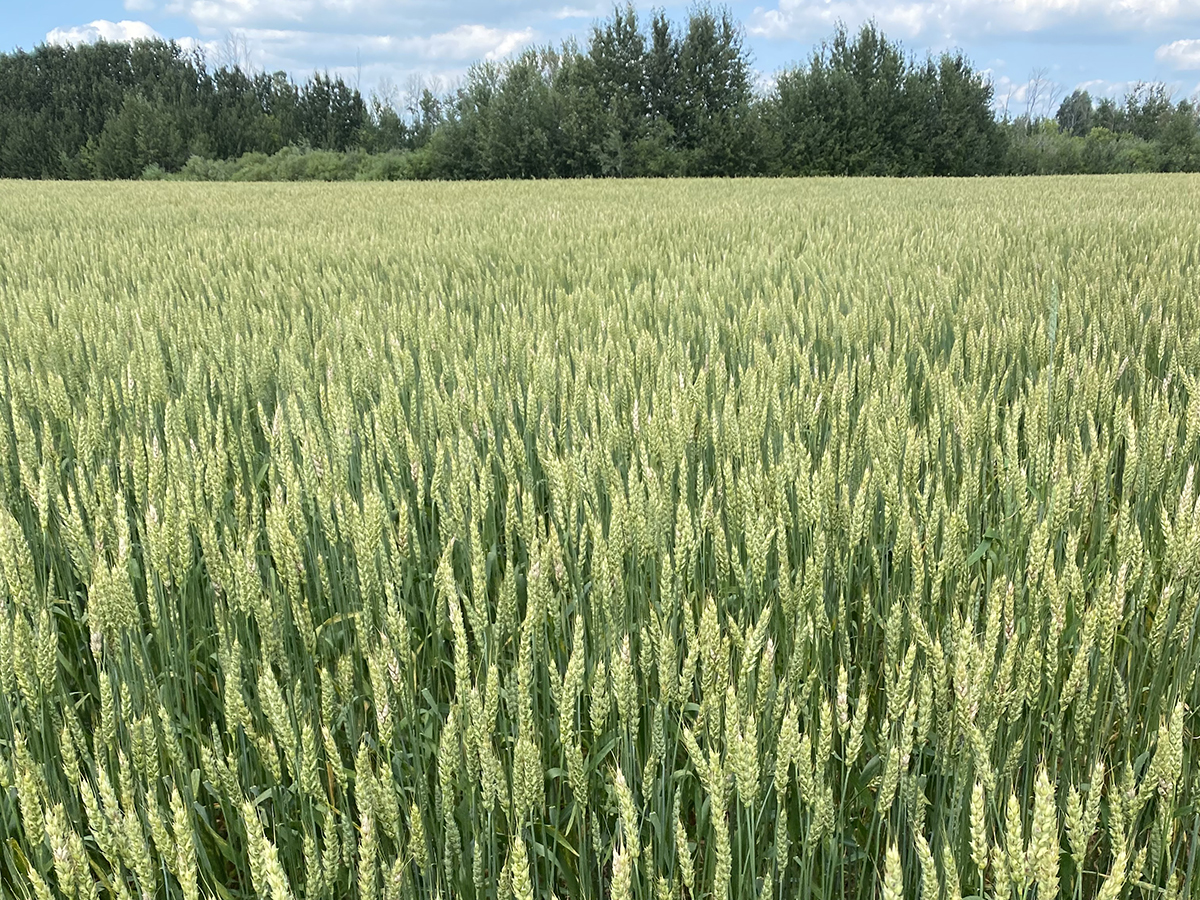Wheat prices stuck in a sideways trading range

Trade and tariff uncertainty may be triggering large price swings in canola and soybeans, but wheat remains largely immune to those broader geopolitical influences for the time being.
The grain finds itself stuck in a sideways trading range, in need of a spark to break out of that rut. Without a weather scare in a significant producing region, the crop will likely hold rangebound.
Spring is historically a softer time in the wheat markets as Northern Hemisphere winter crops approach the harvest period.
Read Also


Weather temporarily lifts wheat but damage not confirmed
Canada has the potential to post a new record for wheat exports this crop year, and the outlook for next year might look a little brighter as crop problems develop in other countries.
Futures: Looking at a nearby weekly chart, the Minneapolis spring wheat futures have been hard pressed to move much above or below US$6 per bushel, typically holding within 25 cents of that level over the past year. The July contract settled at $6.0025 per bushel May 22, having recovered from a nearby low near $5.75 per bushel in the span of a week. The next upside resistance comes in around $6.15, and then there’s the long-term resistance around $6.25.
Cash: Depending on the delivery point, cash bids across Western Canada for 13.5 per cent No. 1 CWRS are currently in the C$7.90-$8.50 per bushel area, with price trends since harvest generally flat like the futures. The demand is not thought to be that aggressive, despite the active export pace, although cash basis levels have strengthened over the past few months as line companies work to fill export shipments.
Fund position: Speculative fund traders remain heavily bearish in wheat, with the combined net short position in the three major U.S. wheat markets at a record-large level. At more than 200,000 contracts spread across the three markets, the possibility of a short covering correction could send wheat prices climbing higher. However, there’s little on the fundamental side that would warrant such a move.
The funds have generally been on the short side of the wheat futures for the past few years, with any past corrective bounces always proving short-lived.
Large supplies: The U.S. winter wheat harvest is underway in Texas and will be rolling north in the weeks ahead. Spring wheat in North America faced some early planting delays in the northern U.S. Plains but appears to be off to a good start for the most part.
Concerns about a spring frost damaging winter wheat in Russia and heat damage to crops in China had given the U.S. futures a modest boost in recent weeks, with a small cut to U.S. condition ratings also supportive. However, the overall market sentiment remains of the opinion that there will be plenty of wheat around this year, despite any minor hiccups.
World production: The U.S. Department of Agriculture is forecasting a record-large world wheat crop in 2025-26 of 808.5 million tonnes, taking total supplies to 1.074 billion tonnes. Consumption is also forecast to hit a record of 808.0 million tonnes, with global trade at 213.0 million tonnes. Russia is projected to remain the leading 2025-26 global wheat exporter at 45 million tonnes, which would be up from 43.5 million for 2024-25. The European Union is forecast to show the largest increase among major exporters, up 7.5 million tonnes to 34 million.
Meanwhile, the International Grains Council maintained its 2025-26 wheat crop outlook at 806.0 million tonnes with an upward revision for the United States offset by cuts for Iran and Turkey.
Canada: Canadian farmers intend to plant 27.5 million acres of wheat this year, which would be up by about 2.5 per cent since 2024-25 and the largest wheat acreage base in nearly 30 years. Early calls from Agriculture Canada place total wheat production, including durum, at 34.73 million tonnes, which would be down by about 200,000 tonnes on the year, given a return to average yields.
Canadian exports: Canada has exported 17.4 million tonnes of wheat through 41 weeks of the 2024-25 marketing year. That’s about 300,000 tonnes ahead of what moved the same time a year ago and puts the country on pace to top the 2023-24 record of 25.32 million tonnes. Agriculture Canada forecasts exports of 26.55 million tonnes in 2024-25 and 26.10 million tonnes in 2025-26.
Source: producer.com


